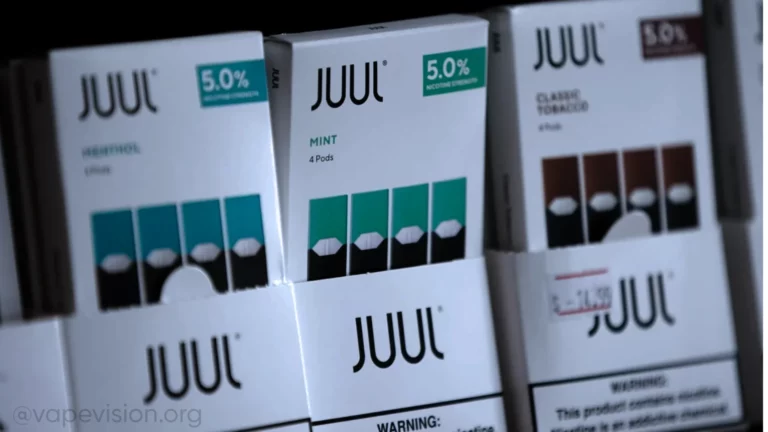New York City is set to receive $27 million to tackle youth vaping as part of a significant settlement resulting from a lawsuit against e-cigarette company Juul. State Attorney General Letitia James announced this development on Wednesday.
Attorney General James spearheaded a multistate lawsuit against Juul in 2019, accusing the company of deceptive marketing practices aimed at youth. The lawsuit culminated in a $462 million settlement, with New York State receiving $112 million. Of this amount, $27 million will be directed to New York City to address the “youth vaping epidemic” that Juul allegedly contributed to. Out of this allotment, $15 million will be allocated to the public school system, while the remaining $12 million will fund various city government initiatives.
Allocation and Utilization of Funds
The settlement funds will be distributed over eight years, with school districts having significant discretion on how to use the money. The funds are intended to be spent in five key areas: education, prevention, enforcement, and research on anti-vaping efforts’ effectiveness.
Speaking at Manhattan’s Martin Luther King Jr. high school campus, James highlighted the pervasiveness of vaping in schools, noting, “The smell of vapes has become commonplace in hallways, cafeterias, and stairwells.” She mentioned that in some schools, vaping had become so prevalent that institutions had to install vape detection devices in bathrooms and other areas.
Impact and Implementation in Schools
Some school districts nationwide have utilized their Juul settlement funds to purchase vape sensors, which detect chemicals emitted during vaping. James’s office confirmed that a similar program in New York City could be a permissible expense, provided it meets the other funding criteria.
A principal from Manhattan, who implemented sensors this year to reduce student vaping in bathrooms, noted that the detectors had significantly decreased incidents. Initially, the school recorded about 60 vape alerts weekly, which have now reduced to only a few times a month. The principal hopes for city subsidies for these devices and additional funding for substance abuse counselors.
Health and Safety Concerns
Vaping devices, or e-cigarettes, work by heating liquid cartridges containing nicotine, flavorings, and other chemicals into an aerosol that is inhaled. There is evidence that nicotine vaping can lead to lung disease, although long-term effects are still under study. Nicotine exposure can alter adolescent brain chemistry, affecting memory, concentration, and learning abilities. In 2019, a 17-year-old from the Bronx became the youngest known vaping casualty in the U.S.
Teen vaping rates have surged over the past decade. According to the University of Michigan’s Monitoring the Future study, the percentage of high school seniors who vaped nicotine in the past month rose from 11% in 2017 to 21% in 2022. Similarly, the number of students who vaped marijuana increased from 5% to 15% over the same period.
In New York City, about one in nine teens reported vaping at least once in the past 30 days in 2021, according to the national Youth Risk Behavior Survey. Girls were more likely than boys to report vaping, with 15% of girls and 7% of boys saying they’d used an e-cigarette in the last month.
Juul’s Role and Legal Actions
The lawsuit filed by James’s office in 2019 accused Juul of marketing its products to young people by emphasizing fruity flavors and downplaying health risks, thus violating state laws against selling tobacco products to minors. According to the suit, a Juul representative even misled New York City high school freshmen by falsely claiming the products were safer than cigarettes.
Educators and students have noted that the proliferation of smoke shops since the state’s legalization of recreational marijuana in 2021 has made vaping products more accessible. The ongoing youth mental health crisis, exacerbated by the pandemic, has driven more teens to substances like nicotine and cannabis for stress relief and self-medication.
Challenges and Responses
At Beacon High School in Hell’s Kitchen, senior Ava Stryker-Robbins described encountering clouds of vape smoke in the bathrooms, making them unusable for students with asthma. Despite the challenges, there has been a decline in the number of controlled substances confiscated in schools this year compared to last, according to the Education Department.
There are currently only 256 Substance Abuse Prevention and Intervention Specialists for over 1,600 public schools in New York City, a significant drop since 2006 due to the expiration of a federal grant. These specialists offer class lessons, group counseling, parent workshops, and referrals to outside support.
Innovative Solutions and Future Steps
Some New York City schools have installed vape detectors to address the issue, though the exact number of schools using these devices is unclear. Zeptive, a Massachusetts-based company, supplies vape detectors to about 30 public and charter schools in the city. A bill introduced by State Sen. Nathalia Fernandez (D-Bronx) would require all NYC schools to install vape detectors, though it has not yet advanced.
The Manhattan principal who installed vape sensors reported a significant reduction in vaping incidents and emphasized the importance of addressing the problem within schools. While vape detectors alone cannot solve the societal issue of youth vaping, they are a critical first step in creating a safer school environment.



